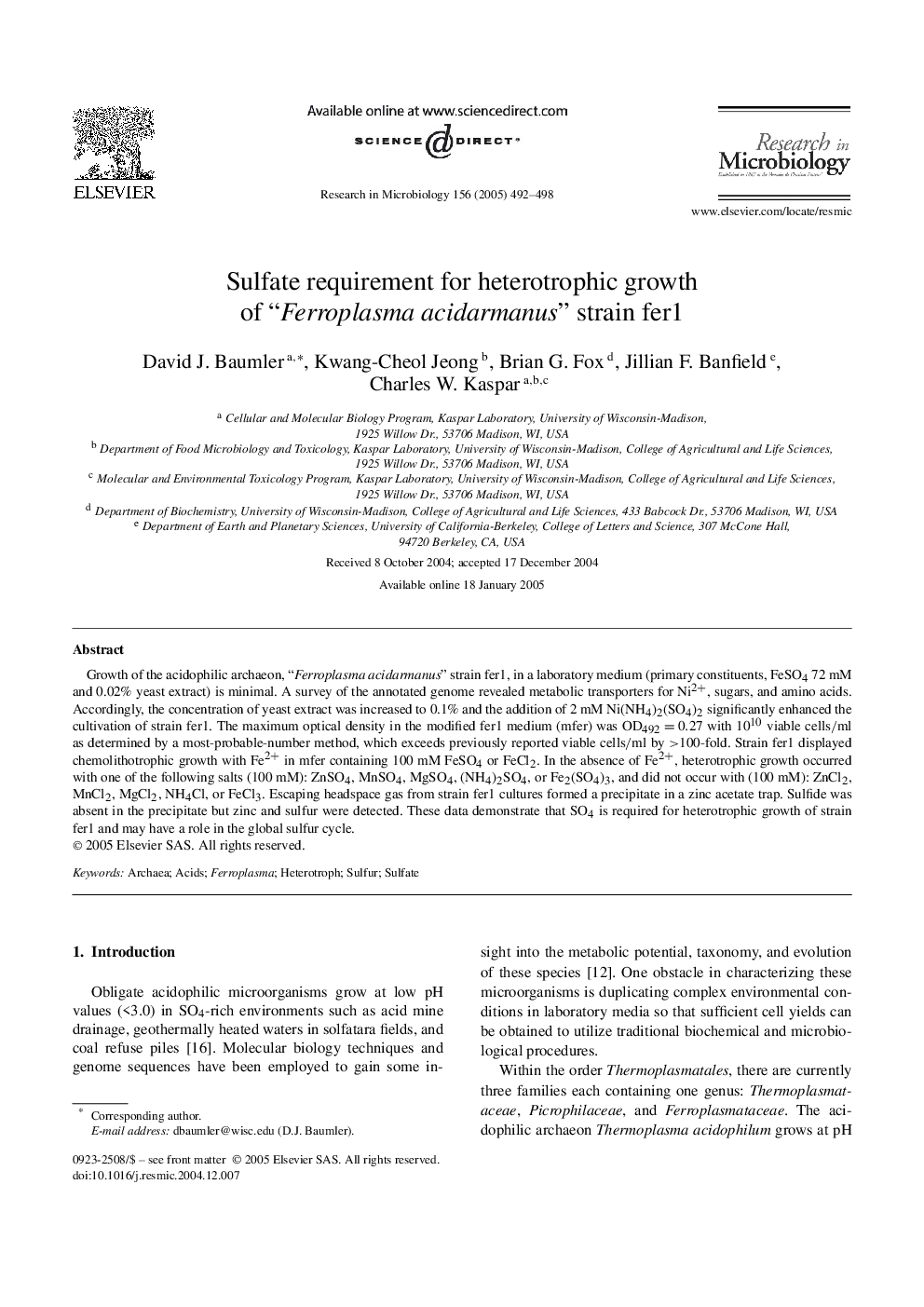| کد مقاله | کد نشریه | سال انتشار | مقاله انگلیسی | نسخه تمام متن |
|---|---|---|---|---|
| 9440144 | 1300544 | 2005 | 7 صفحه PDF | دانلود رایگان |
عنوان انگلیسی مقاله ISI
Sulfate requirement for heterotrophic growth of “Ferroplasma acidarmanus” strain fer1
دانلود مقاله + سفارش ترجمه
دانلود مقاله ISI انگلیسی
رایگان برای ایرانیان
کلمات کلیدی
موضوعات مرتبط
علوم زیستی و بیوفناوری
ایمنی شناسی و میکروب شناسی
میکروبیولوژی و بیوتکنولوژی کاربردی
پیش نمایش صفحه اول مقاله

چکیده انگلیسی
Growth of the acidophilic archaeon, “Ferroplasma acidarmanus” strain fer1, in a laboratory medium (primary constituents, FeSO4 72 mM and 0.02% yeast extract) is minimal. A survey of the annotated genome revealed metabolic transporters for Ni2+, sugars, and amino acids. Accordingly, the concentration of yeast extract was increased to 0.1% and the addition of 2 mM Ni(NH4)2(SO4)2 significantly enhanced the cultivation of strain fer1. The maximum optical density in the modified fer1 medium (mfer) was OD492=0.27 with 1010 viable cells / ml as determined by a most-probable-number method, which exceeds previously reported viable cells / ml by >100-fold. Strain fer1 displayed chemolithotrophic growth with Fe2+ in mfer containing 100 mM FeSO4 or FeCl2. In the absence of Fe2+, heterotrophic growth occurred with one of the following salts (100 mM): ZnSO4, MnSO4, MgSO4, (NH4)2SO4, or Fe2(SO4)3, and did not occur with (100 mM): ZnCl2, MnCl2, MgCl2, NH4Cl, or FeCl3. Escaping headspace gas from strain fer1 cultures formed a precipitate in a zinc acetate trap. Sulfide was absent in the precipitate but zinc and sulfur were detected. These data demonstrate that SO4 is required for heterotrophic growth of strain fer1 and may have a role in the global sulfur cycle.
ناشر
Database: Elsevier - ScienceDirect (ساینس دایرکت)
Journal: Research in Microbiology - Volume 156, Issue 4, May 2005, Pages 492-498
Journal: Research in Microbiology - Volume 156, Issue 4, May 2005, Pages 492-498
نویسندگان
David J. Baumler, Kwang-Cheol Jeong, Brian G. Fox, Jillian F. Banfield, Charles W. Kaspar,